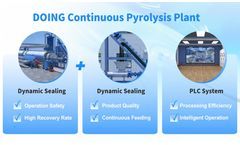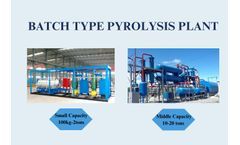Pyrolysis Reactors Articles & Analysis: This-Year
8 news found
A continuous pyrolysis plant requires a coordinated system of equipment to achieve uninterrupted feeding, pyrolysis, product separation, and environmental protection. ...
Pyrolysis equipment plant stands as an environmentally friendly recycling solution for waste. ...
Pyrolysis oil: A liquid fuel blend that can be refined into diesel, gasoline, or industrial solvents. ...
Tyros, founded in May 2024, is investing in an electric pyrolysis reactor with the support of the Flemish government (1 million euros in strategic ecology support). This reactor will convert 9,125 tons of rubber granulate annually into valuable primary components such as recovered Carbon Black, pyrolysis oil and syngas. ...
Yes, plastic bags can be pyrolyzed. Pyrolysis is a thermal decomposition process that breaks down organic materials (like plastics) in the absence of oxygen, producing valuable byproducts such as pyrolysis oil, char (carbon residue), and gaseous hydrocarbons. ...
Feeding the Materials The prepared tire and plastic waste is then fed into the pyrolysis reactor. Depending on the design, this can be done manually or through an automated conveyor system. 3. Heating and Pyrolysis Reaction Once the materials are loaded, the reactor is heated to a temperature between 200°C and 350°C . ...
Pyrolysis Waste to Energy Technology is a process that converts waste materials such as municipal solid waste, agricultural waste, or industrial waste, are heated to high temperatures in a sealed pyrolysis reactor. Under these conditions, the complex organic compounds in the waste break down into simpler substances, including gases, liquids, and ...
The amount of heat required to start a pyrolysis reaction can vary depending on the type of feedstock and the specific conditions of the process. Generally, the temperature range for initiating pyrolysis is between 400°C and 600°C . For example, Plastic Pyrolysis: Typically requires temperatures in the range of 400°C to 500°C. ...








